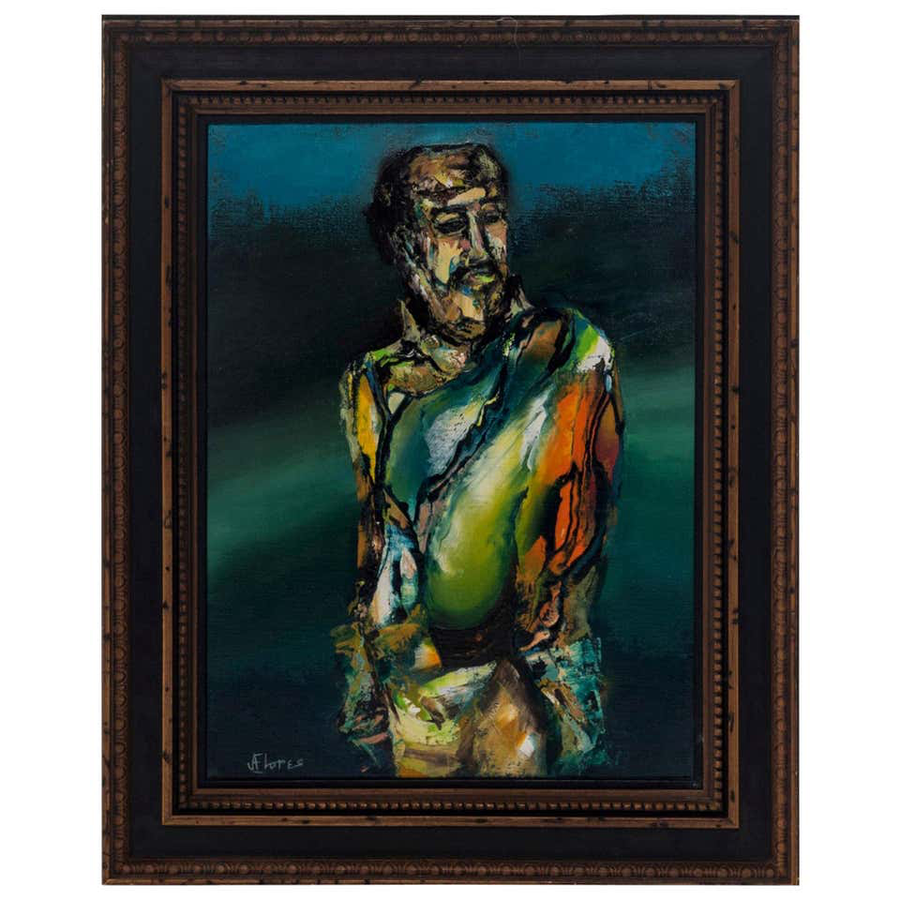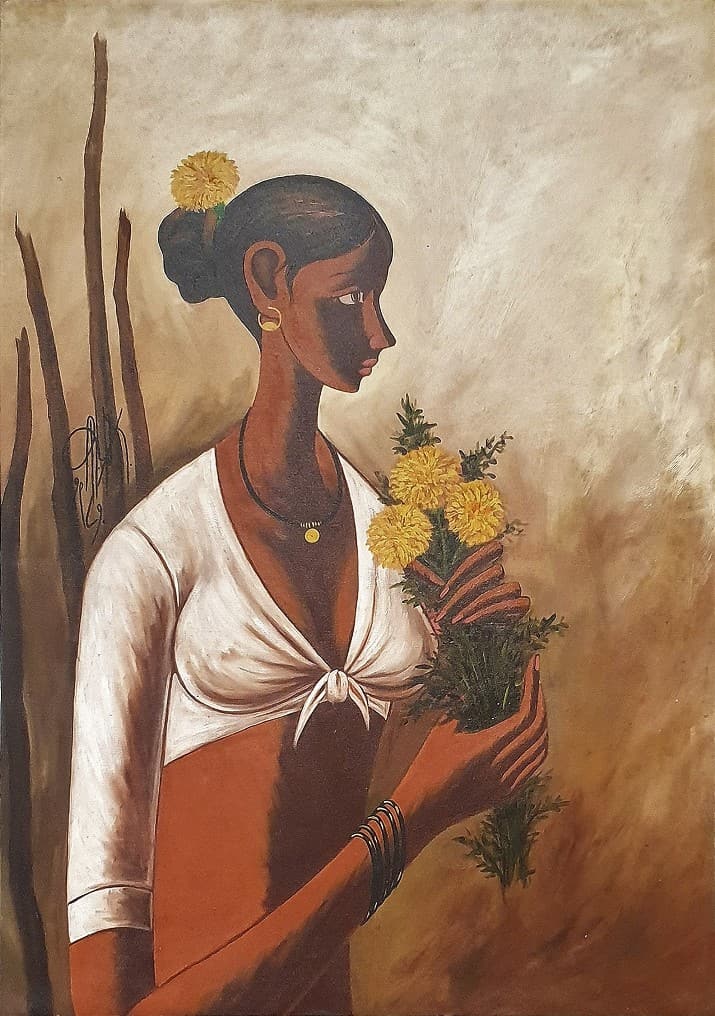The Evolution of Art: A Comprehensive Guide to Figurative Oil Painting
The Evolution of Art: A Comprehensive Guide to Figurative Oil Painting
Blog Article
The Evolution of Figurative Oil Paint: Comprehending Its Historical Value and Modern Interpretations
The advancement of figurative oil paint serves as an engaging lens through which to take a look at the interplay in between imaginative expression and historical context. Contemporary musicians, drawing from this rich heritage, are currently reinterpreting the human figure in methods that test traditional stories.
Beginnings of Metaphorical Oil Painting
The origins of metaphorical oil painting can be mapped back to the very early Renaissance in Europe, particularly in the 15th century. This period noted a significant departure from the inflexible forms and flat depictions characteristic of medieval art. Musicians started to explore naturalism, highlighting the human number and its psychological expression. The development of oil paint permitted better deepness of color and detail, improving the realistic look and vibrancy of their job.

In this transformative era, numbers were usually shown within contextually abundant atmospheres, showcasing not only their physical characteristics but also their mental states. Leaders such as Jan van Eyck and Titian took advantage of the medium's flexibility, employing layering strategies to accomplish brightness and texture. This innovation promoted the representation of elaborate fabrics and the nuances of skin tones, contributing to the development of portraiture and narrative scenes.
Additionally, the Renaissance emphasis on humanism cultivated a recognition for distinctiveness, which in turn affected artists to develop more dynamic and relatable figures - figurative oil painting. Therefore, figurative oil paint became an effective car for narration and emotional engagement, laying the foundation for future artistic activities and styles
Trick Historical Movements
Considerable historical motions have actually shaped the advancement of figurative oil paint, each adding distinct ideologies and methods that increased the medium's opportunities. The Renaissance noted a zero hour, emphasizing realism and the human kind, with artists like Leonardo da Vinci and Michelangelo pushing the borders of anatomical precision and viewpoint. Following this, the Baroque era brought remarkable contrasts of light and darkness, exemplified by Caravaggio, who instilled religious styles with extreme emotionality.
The 19th century presented Romanticism and Realism, where musicians such as Delacroix and Courbet tested classical suitables, concentrating on individual expression and everyday life. The development of Impressionism further reinvented the tool by emphasizing the impacts of light and shade, resulting in a separation from typical representation.
In the very early 20th century, activities like Expressionism and Cubism redefined figurative painting via abstraction and the exploration of emotional deepness. Each of these movements not only showed the social changes of their times but likewise prepared for modern analyses. The interplay between these historic movements has actually produced an abundant tapestry of styles and ideologies, affecting modern-day musicians in their search of recording the human experience on canvas.
Strategies and Products Development

Throughout the Baroque period, techniques such as chiaroscuro and sfumato arised, enhancing the psychological resonance of metaphorical compositions. Musicians began to explore glazes and impasto, adjusting texture and luminance. By the 19th century, developments like the usage of pre-mixed paints in tubes transformed accessibility, enabling artists to paint en plein air and record the fleeting impacts of light.
The 20th century saw the intro of synthetic pigments and tools, which expanded the scheme and altered the uniformity of oil paints. Furthermore, the expedition of new application strategies, such as combination knives and brushes of differing rigidity, additional varied artistic expression. Collectively, these innovations reflect the progressing partnership between materials, methods, and the imaginative vision inherent in figurative oil painting.

Contemporary Interpretations
Contemporary analyses of figurative oil painting show a dynamic dialogue between tradition and development, where artists challenge established standards and discover varied motifs. This advancement shows up in numerous methods, as contemporary artists blend classical strategies with modern-day principles, usually resolving social, political, and individual narratives.
Numerous specialists draw ideas from historic works, yet they infuse their items with modern point of views, utilizing the human form as a lorry for discourse on sex, identity, and culture. Artists significantly explore abstraction, distortion, and multimedias, which permits a more comprehensive interpretation of the number and its context.
Additionally, making use of vivid shade palettes and unusual structures typically serves to interrupt conventional watching experiences, prompting crucial involvement from target markets. This shift in emphasis extends past aesthetic appeals; it reflects an expanding awareness of the intricacies of human experience in an interconnected globe.
As figurative oil paint proceeds to progress, it stays a vital tool for discovering the nuances of contemporary life, symbolizing both a respect for heritage and a dedication to progressive thought. The outcome is an abundant tapestry of expression that reverberates with the intricacies of the contemporary human problem.
Effect on Modern Art
The effect of figurative oil painting on click site contemporary art is profound, as it has continuously motivated a myriad of artistic movements and methods throughout the 21st and 20th centuries. From Expressionism to Surrealism and past, the expedition of the human number has remained a central style, enabling musicians to share intricate feelings and stories. This focus on metaphorical representation has caused a re-examination of typical strategies, resulting in innovative approaches that blend realism with abstraction.
Furthermore, contemporary artists have embraced figurative oil painting as a way to address social and political issues, utilizing the medium to challenge perceptions of gender, identity, and society. The revival of rate of interest in figurative work in current years mirrors a wishing for link in a progressively digital world, where human experience and feeling are extremely important.
In addition, the discussion between metaphorical oil paint and contemporary art is apparent in the works of musicians such as Kehinde Wiley and Jenny Saville, that make use of historical referrals while infusing their pieces with modern importance. Eventually, figurative oil paint continues to shape and redefine modern-day creative expression, highlighting its enduring value in the art globe.
Final Thought
The evolution of metaphorical oil painting underscores its historic relevance and versatility across numerous creative movements. From the naturalism of the Renaissance to the stirring expressions of the Baroque and the ingenious approaches of modernity, this tool has consistently transformed. Contemporary interpretations mirror lively shades and unique structures, fostering important engagement with political and social styles. Inevitably, figurative oil paint remains an essential medium for checking out the human experience, reverberating profoundly in today's electronic landscape.
The development of metaphorical oil painting serves as an engaging lens via which to examine the interplay between creative expression and historic context.Significant historical motions have actually Web Site formed the advancement of metaphorical oil painting, each contributing distinct approaches and strategies that increased the tool's possibilities.As historical movements shaped the trajectory of figurative oil painting, the methods and products used by musicians have actually additionally undertaken substantial transformations. figurative oil painting.The impact of figurative oil painting on modern art is profound, as it has continually inspired a myriad of artistic movements Get More Information and practices throughout the 21st and 20th centuries.The advancement of metaphorical oil paint highlights its historical importance and adaptability across various imaginative activities
Report this page